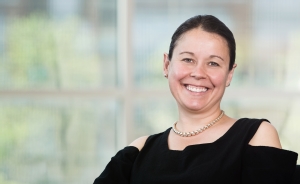UOIT Science dean to present RCI lecture November 20 at University of Toronto
November 9, 2011

As part of the Royal Canadian Institute (RCI) for the Advancement of Science Fall 2011 Lecture Series, Dr. Deborah Saucier, dean, Faculty of Science, University of Ontario Institute of Technology (UOIT) will present a talk entitled What does Studying Individual Differences Tell Us about the Brain?
Dr. Saucier’s lecture is scheduled for Sunday, November 20 at 3 p.m. in the MacLeod Auditorium, Medical Sciences Building, University of Toronto (doors open at 2:15 p.m.). The free, public one-hour lecture will be followed by a question period.
Individuals differ in their spatial abilities, including their ability to navigate through space, to remember the location of items and to compare objects that are presented in different orientations. The hippocampus, the part of the brain that is associated with many spatial abilities, is also a site in the brain that exhibits neurogenesis: the development of new cells. Dr. Saucier’s research examines how neurogenesis relates to the performance of spatial abilities, how changes in hormone levels are associated with changes in neurogenesis and spatial ability and how neurogenesis changes as we age. This research has important implications for understanding how the brain changes over the lifespan.
The University of Toronto’s Medical Sciences Building is located at 1 King’s College Circle (near Wellesley Street and West and Queen’s Park Crescent West; the closest TTC subway stop is Queen’s Park station). Parking on campus at the University of Toronto is pay-and-display. Limited disabled parking is available.



